The Hollows
Antique Book Shop, Wienzeile, Naschmarkt, 2008
It’s the onset of winter at Vienna’s biggest flea market (https://theyshootmusic.at/spots/38). People stroll by, warmly wrapped in their clothes. In midstream, Greg O’Brien from the Irish band The Hollows sings “Life runs away and the part that you play might seem exceptionally small.” The cold wind whistles around their ears on this grey Saturday morning as he goes on, “At the end of the day, things won’t go the way, that you had once planned them all”. The performance from Greg and his band mate Gary Morrison flows in unobtrusively, their music is gentle and lugubrious. After having played poppy punk stuff and instrumental post-rock in former bands, where they often got in trouble either during practice or gigs for being too loud, the two Dubliners created The Hollows’ sound of simple, but effective quietness. To earn their living the unagitated and very pleasant musicians work in a bank and with the Youth Service, looking after kids from disadvantaged areas. There has not been much chance to see The Hollows perform outside Ireland so far; however at their first show in Vienna they received by all means a warm response. A beagle howls to the lines “There is a beautiful world out my window, it’s full of things that I love” raising a smile on Gary’s face before we take refuge from the cold in a small second hand bookshop.
- Photography
- Simon Brugner
- Artist
- The Hollows

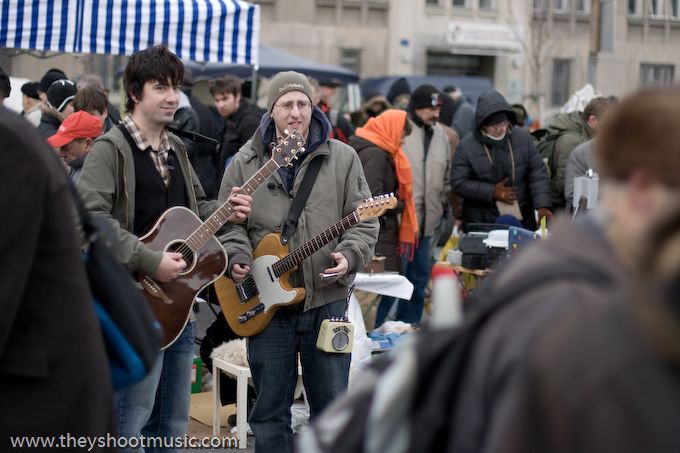
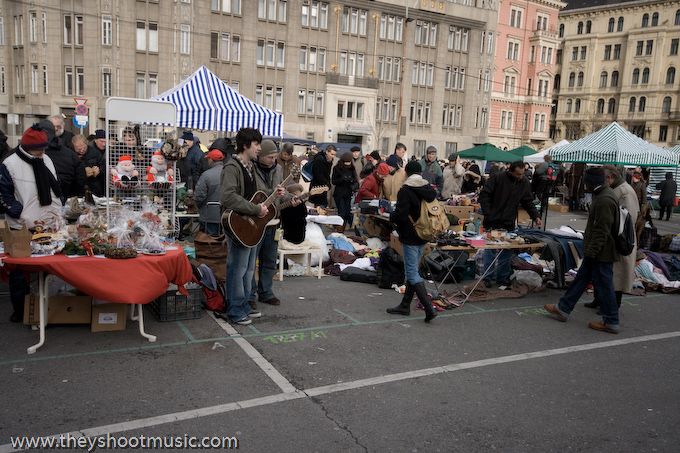
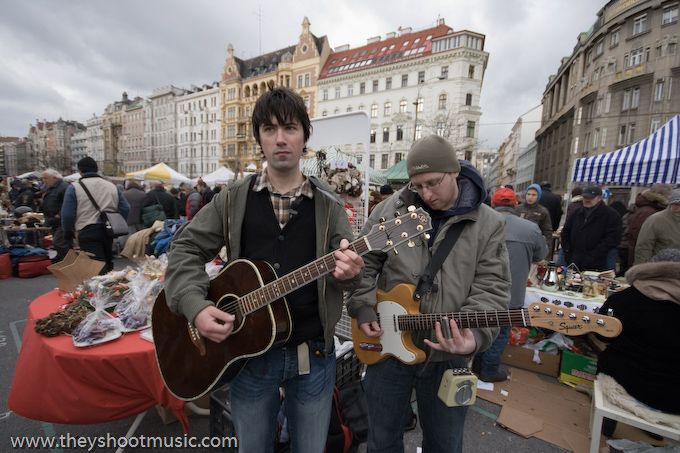
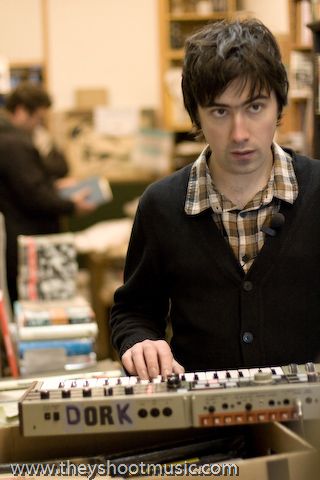
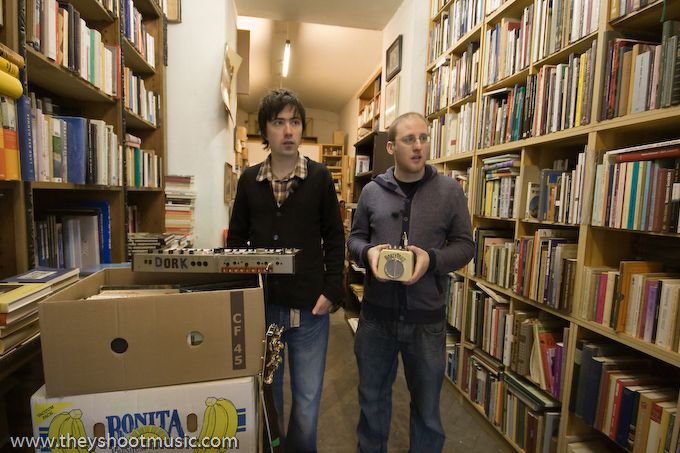
Antique Book Shop, Wienzeile
Shop opening hours in general tend to be a bit shorter in Austria than elsewhere. However, the small antique book shop at Linke Wienzeile 40 carries this difference to extremes; opening its doors for a mere two hours per week, on Saturday from 10 to 12 a.m., as the busy Naschmarkt flea market takes place across the street. The small, narrow shop is a branch of antiquary Hans Lugmair’s more frequently accessible Inner-City-shop in Seilergasse. Apart from old books, there are also picture postcards, photos, documents and lots of other paper-made antiques to be found. Selling old goods – especially books – has a long tradition in Vienna and started more than 230 years ago, when the rules for booksellers allowed for trading with antique books for the first time. The industry quickly developed as secularization and the decline of aristocracy changed the Viennese society at the beginning of the 19th century. At the same time growing interest in sciences raised demand for old books. Despite universities, schools, libraries and monasteries being good customers of the antique shops, most of the booksellers had a hard time running their businesses. Many of them suffered from poverty. After several up’s and down’s in the bookselling industry since then, antique shops are nowadays omnipresent in the city and add their share to Vienna’s historic flair.
Naschmarkt
Naschmarkt is the biggest inner city market and thus Vienna’s most popular one. It has existed since the 16th century when it was more of a farmer’s market offering aliment for the daily need. Its name and expansion have changed several times since then. The area carries the signature of the famous architect and urban planner Otto Wagner and was intended to become his biggest showcase. After he regulated and canopied the river Wien (so Naschmarkt could spread on the newly won surface on the roofed river), Otto Wagner looked to transform Wienzeile, which runs along the right and left side of river Wien and Naschmarkt from Karlsplatz to Schloss Schönbrunn, into a spanking boulevard. The outbreak of World War I eventually frustrated further constrution projects. Some grand art-nouveau apartment buildings along Wienzeile (Wienzeilenhäuser) give an idea of the resplendent, but unrealised plan at the turn of the 20th century. The assortment of goods sold at the market grew and grew and the market became well-known for its exotic titbits. The term Naschmarkt, meaning market for eating titbits, was born. In addition to local products, international food from the former Yugoslavia, Greece, Turkey and from East Asia can be consumed here. Apart from the traditional market stalls, there are an increasing number of small-sized restaurants, trendy bars and well-attended cafes. Naschmarkt is very much alive, a tourist hot spot and still a superb place to snack. Most activity is on Saturdays when adjacent to the food market Vienna’s most popular flea market takes place. Naschmarkt is closed on Sundays, although there’s been ongoing discussion about a liberalisation of opening hours.